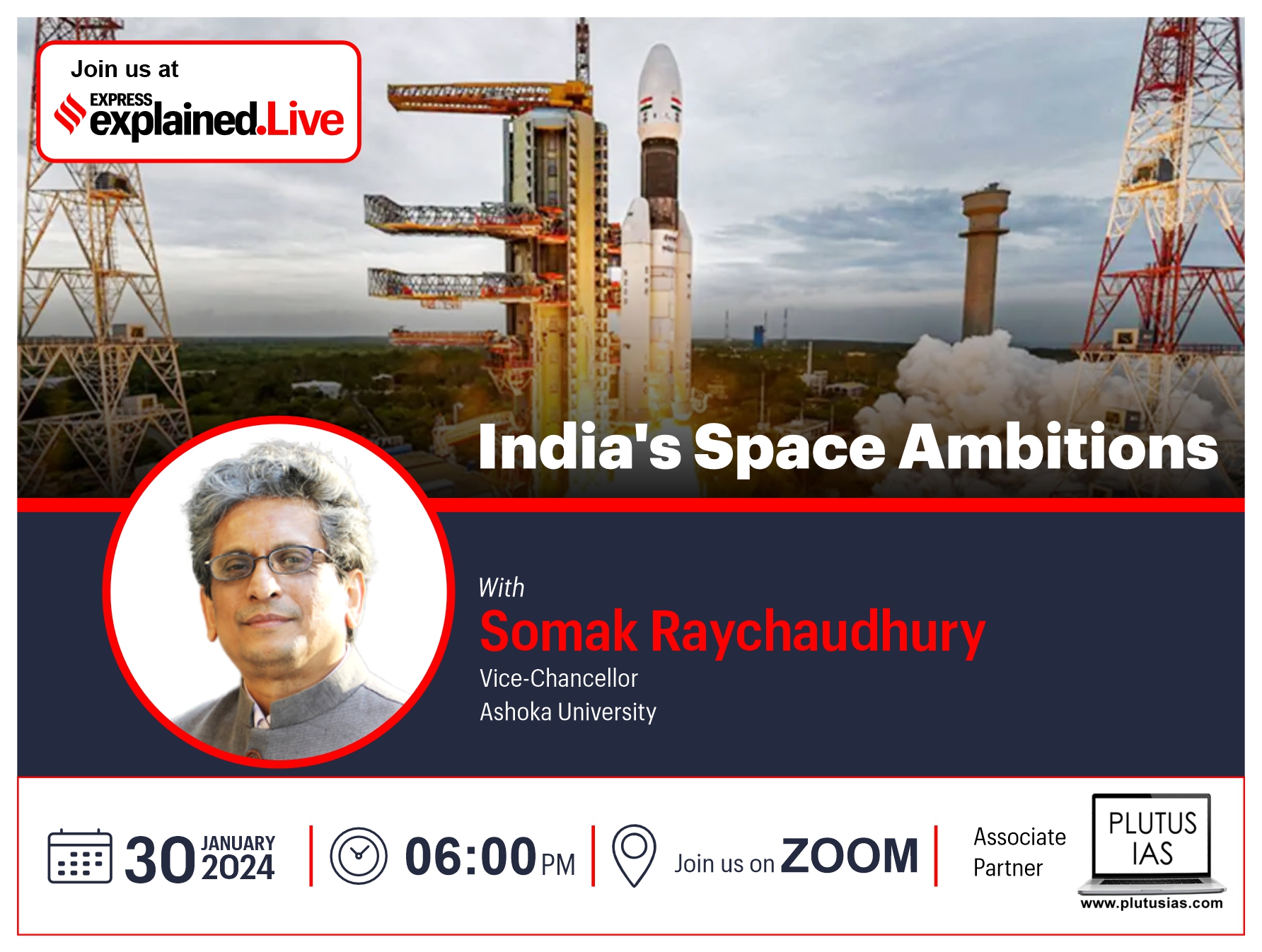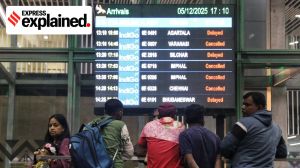The temple that Aurangzeb razed: Evidence from history on Gyanvapi and Kashi Vishwanath
The ASI has said it has relied on “scientific studies and observations”; there is also ample textual evidence that supports its conclusion.
 The Gyanvapi Mosque as seen from the Kashi Vishwanath Temple, in Varanasi, Saturday, Jan. 27, 2024. (PTI Photo)
The Gyanvapi Mosque as seen from the Kashi Vishwanath Temple, in Varanasi, Saturday, Jan. 27, 2024. (PTI Photo) The Archaeological Survey of India (ASI) has concluded that “there existed a large Hindu temple prior to the construction of the existing structure” at the Gyanvapi mosque site in Varanasi. The ASI has said it has relied on “scientific studies and observations”; there is also ample textual evidence that supports its conclusion.
The 1669 farmaan
A temple that stood adjacent to the existing Kashi Vishwanath temple is thought to have been razed on the orders of the Mughal Emperor Aurangzeb, and the Gyanvapi mosque erected on its ruins.
The most popular primary source cited for this is Saqi Mustaid Khan’s Maasir-i-Alamgiri, a Persian-language chronicle written shortly after Aurangzeb’s death in 1707. The ASI report refers to historian Jadunath Sarkar’s 1947 translation of the text.
“His Majesty [Aurangzeb], eager to establish Islam, issued orders to the governors of all the provinces to demolish the schools and temples of the infidels, and with the utmost urgency put down the teaching and the public practice of the religion of these misbelievers,” says the Maasir-i-Alamgiri.
The royal farmaan (decree) issued in Aurangzeb’s twelfth regnal year on April 9, 1669 led to the destruction of both the Vishwanath temple in Kashi and the Keshavdev temple in Mathura. Sarkar interpreted this as part of Aurangzeb’s larger “attack on Hinduism”. (A Short History of Aurangzib 1618-1707 (1930))
Historian S A A Rizvi wrote that “Aurangzib’s reign was marked by a gradual departure from Akbar’s policy of coexistence”. In 1665, he fixed the customs duty on imports by Hindu traders at double the rate payable by Muslims and, two years later, altogether abolished customs duty for Muslims.
“In January 1669 the wedding of Prince Azam (the third son of Aurangzeb)…offered the Emperor a chance to show his orthodoxy by issuing innumerable puritanical ordinances,” Rizvi wrote in The Wonder That Was India Vol II (1200-1700) (1987).
“A general order to demolish temples and Hindu centres of learning was issued. The celebrated Visvanatha Temple of Banaras and the Keshava Rai Temple of Mathura, which had been presented with a stone railing by Dara Shukoh, were reduced to ruins. This policy was implemented even in remote East Bengal, Palamau, Rajasthan, and later in the Deccan,” Rizvi wrote.
Political motives
Historian Richard Eaton argued that the 1669 farmaan was not a “general order for the immediate destruction of all temples”, rather it was “targeted at those institutions where a certain kind of teaching had been taking place”. (‘Temple Desecration And Indo-Muslim States’: Journal of Islamic Studies, 2000).
Eaton pointed to a line from the Maasir-i-Alamgiri saying Aurangzeb had learnt that in certain places, “and especially at Benares, the Brahman misbelievers used to teach their false books in their established schools, and that admirers and students both Hindu and Muslim, used to come from great distances to these misguided men…”
Historian Satish Chandra wrote that “Aurangzeb began to look upon temples as centres of spreading subversive ideas, that is, ideas which were not acceptable to the orthodox elements”. (History of Medieval India 800-1700, (2007))
There is also a theory that Chhatrapati Shivaji’s escape from Mughal custody in Agra, provoked the humiliated Aurangzeb to order the destruction of the Kashi temple, as retribution.
“In 1669, there arose a rebellion in Benares among landholders, some of whom were suspected of having helped Shivaji, who was Aurangzeb’s arch enemy, escape from imperial detention,” Eaton wrote.
Historian Audrey Truschke wrote: “Aurangzeb brought the bulk of Benares’s Vishvanatha Temple down in 1669. The temple had been built during Akbar’s reign by Raja Man Singh, whose great-grandson, Jai Singh, many believed helped Shivaji flee from the Mughal court in 1666.” (Aurangzeb: Life and Legacy of India’s Most Controversial King (2017)).
Chandra agreed that “In case of conflict with local elements, he (Aurangzeb) now considered it legitimate to destroy even long-standing Hindu temples as a measure of punishment and as a warning.”
Gyanvapi mosque erected
The mosque at the site of the destroyed temple likely came up in the 1670s or ‘80s.
“A part of the ruined temple’s wall [was] incorporated into the building,” Truschke wrote. “This reuse may have been a religiously clothed statement about the dire consequences of opposing Mughal authority. ”
Unlike the Shahi Eidgah built over the destroyed Mathura temple, the Gyanvapi mosque’s patron remains unknown. It does not find mention in Mughal court documents.
The present-day Kashi Vishwanath temple was built next to the mosque by Queen Ahilyabai Holkar in the 18th century.
- 01
- 02
- 03
- 04
- 05






































